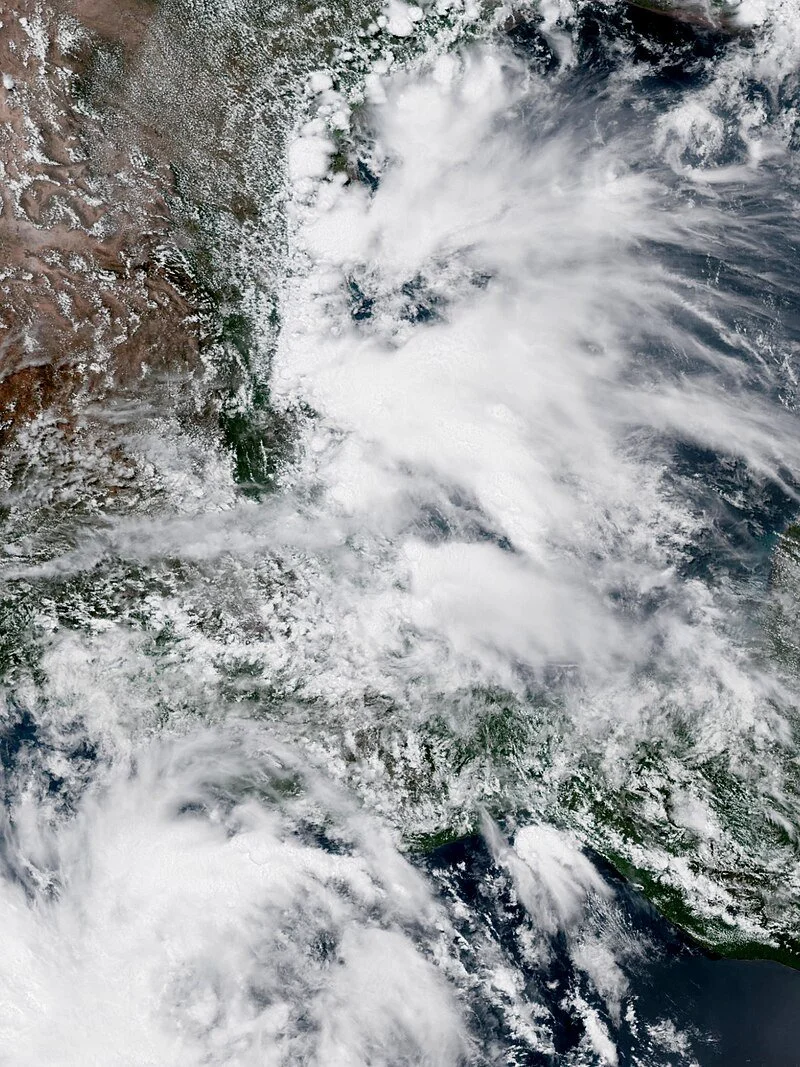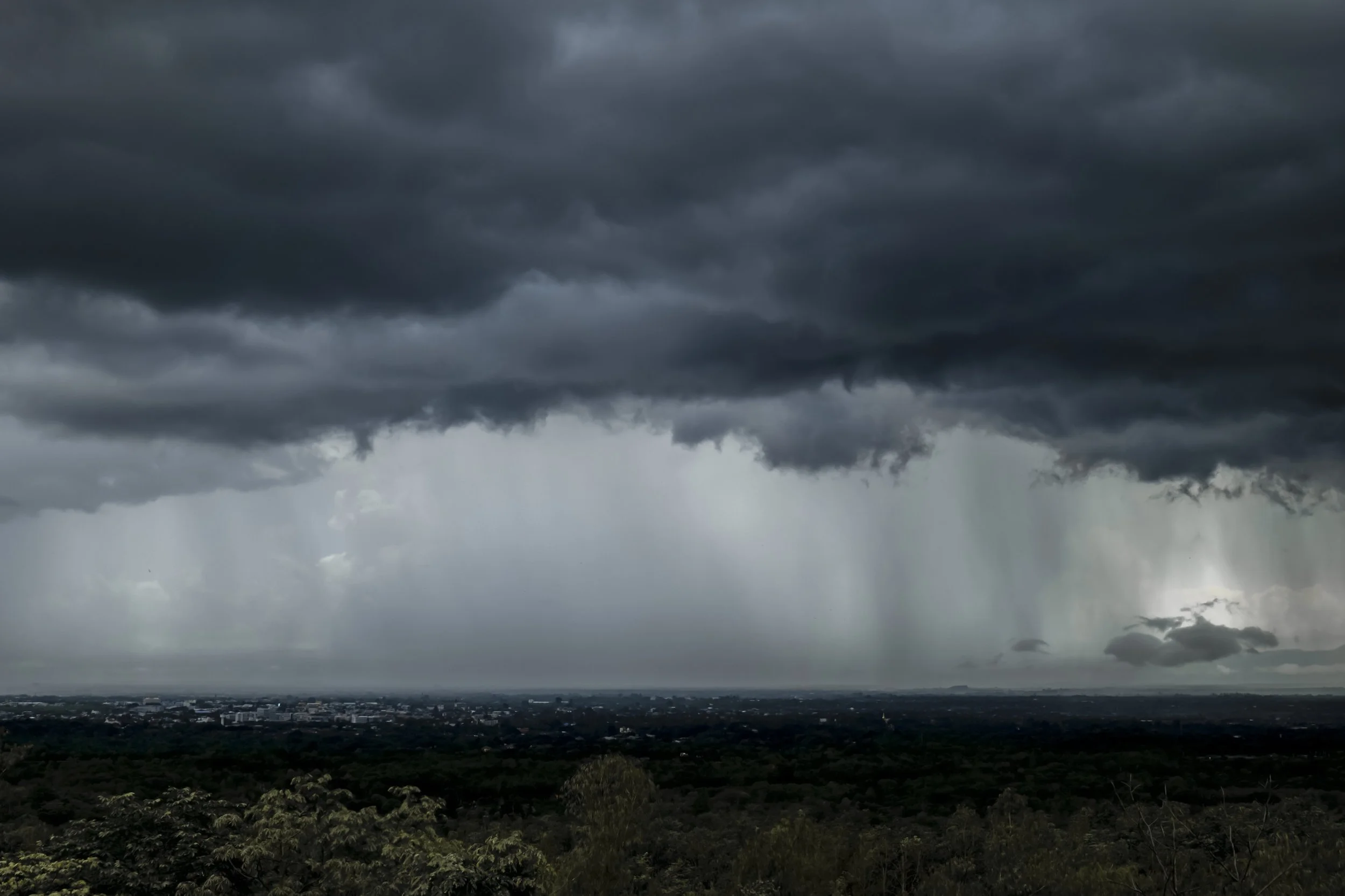Instead of/In Addition to Prayer, We Can Recognize Predictable Patterns and Take Ownership of Prevention
by Kevin Reed
ABI Imagery from NOAA's GOES-19 Satellite-NASA Worldview
On June 28, 2025, Tropical Storm Berry formed in the Bay of Campeche, in the southern area of the Gulf of Mexico. Berry is the second storm with a name in the 2025 Hurricane Season, and caused some flooding and five deaths in Mexico. Berry dissipated over Mexico, but remnant moisture (leftover rain and wind) from Berry combined with some other remnant moisture from the Eastern Pacific Ocean, creating a system that came up through south-central Texas.
A “stationary mid-level trough” developed over the region. A stationary mid-level trough is a prolonged area of low atmospheric pressure, that stays in one place for a while. Typical troughs move quickly, but a “stationary” trough will stick in place, and lead to persistent weather patterns below. This caused storms to “train” over Texas —storms repeatedly passing over the same locations.
A “mesoscale convective vortex” (a rotating storm within the larger pattern) helped sustain intense upward air motion, converting the moisture into torrential rainfall. This combination produced nearly 10–20 inches of rain in hours, causing rapid river surges of 20–30 feet. The flash floods have killed at least 118 with many more still missing.
Texas Governor Abbott stated in a press conference, that “Prayer matters. [Prayers] could have been the reason why water stopped rising…All we know is that prayer does work. Your prayers have made a difference.”
In real life, the water stopped rising because the trough weather pattern weakened and departed the area. As the rain lightened, there was less runoff. With no fresh rain fueling the system, downstream river flows began receding, following normal hydrological discharge behavior. Basic, predictable patterns.
This is the thing. On one hand we have a state leader telling people that prayer stopped rising water levels. On the other hand, in basic, everyday reality, the weather trough causing the train of storms to stall simply moved on. There is no need to rely or call on prayer when we have observations of basic weather patterns that have been studied in detail for decades.
If we know the patterns of things ahead of time, we can plan for unavoidable things like this via preparation and prevention as much as possible.
Flash Flood Alley, Texas
We know the geology of the area. The region is called “Flash Flood Alley.” It’s a known geological type prone to flash floods. There have been at least 14 major floods in the region since 1913. Why? Flash Flood Alley is a crescent‑shaped region stretching from west of San Antonio through the Texas Hill Country up past Dallas along the Balcones Escarpment (more on this below), covering rivers like the Guadalupe and Colorado. It’s about 50 miles wide.
Rugged, steep hills and narrow, rocky canyons funnel rainwater swiftly into river channels. Thin, clay‑rich or karst (limestone) soils absorb little moisture, increasing surface runoff and speed. So, a landscape prone to flash floods to start with.
In addition to that basic geology, local formations impact weather patterns. The Balcones Escarpment is an area of faulting that runs from the southwest part of Texas up to the north central part. It’s made up of regular faults (where rock moves in opposite directions), grabens (a depressed block of Earth’s crust), and horsts (a raised block of Earth’s crust).
Horst_graben.jpg: U.S. Geological Survey derivative work: Gregors (talk) 11:17, 7 June 2011 (UTC) - Horst_graben.jpg
Who cares? Well, apparently the Balcones Escarpment forces moist Gulf air upward, creating intense, concentrated rainfall—and when such storms stall, they can drop 20 inches of rain or more in just a few hours. It’s a predictable pattern that we already know about.
We know climate change is making the area dryer than usual – it’s trending dryer over time. Dryer conditions make flash flooding more likely and worse, just like they make wildfires more likely, larger, and bigger (as in CA and globally).
We know climate change is making storms and flooding more likely and more intense. We can see this as a national trend of steadily increasing events, larger events, and larger costs.
National Weather Service image of warning siren
We know that there was a discussion about addressing the risk at different moments in history. In the 1980s early warning sensors were installed which are now outdated. Then they tried CodeRED phone alerts with mixed results. The key thing is that in 2016, two Commissioners advocated for an upgraded warning system featuring outdoor sirens along low-water crossings and river gages. The sirens can be heard as far as 3 miles away. A $50,000 study detailed how the system would work. The siren setup would cost about $1 million.
In 2017 Kerr county applied for the money under the FEMA Hazard Mitigation Assistance Program. This program gives money to states to help prevent disasters like deaths from known risk to flash flooding, for example. The Texas Division of Emergency Management decides which applications move forward to FEMA, and in this case, they denied the application, and they denied it again when Kerr county applied the following year.
When that funding was left unapplied for, Kerr county residents and officials resisted tax increases.
As a result, Kerr County lagged behind regional peers in adopting multi-layered alerts (gauges, sirens, automated calls). Sirens would have provided critical seconds/hours of lead time, as evidenced by zero fatalities in equipped communities during the July floods. Even just this year, a vote came up on House Bill 13, which would have developed an emergency response plan and “the use of outdoor warning sirens,” that was struck down in the Texas state Senate.
So we know the siren system works, and we know the system was not put in place because a Texas agency didn’t want to apply for it, local people and officials didn’t want to pay higher taxes, and the Texas Senate thought it was too expensive. This is not to lay blame, but it’s prudent to recognize basic reality and facts. People didn’t want to pay for it, so they didn’t pay for it, and it was not put in place – even though there was clear risk and a defined solution.
We know that there will be floods here in the future, and that the climate impacts will only make the risks greater. We also know that when people deny the simple realities of climate change, they are ignoring risks based on simple, observable data.
We know all this stuff! I learned it this week and I’m just a regular person! If we recognize these things, we can take action to help minimize the negative impacts of predictable events in the future.
Flooding of the Guadalupe River, near Kerrville, Texas (Photo via Wikimedia Commons)
Had the discussion in 2016 continued on a logical path, had Texas applied to FEMA for prevention funding and had it been approved, many of the people killed in this week’s flash flood might be alive today.
And, if we have the discussion NOW, then it can help save people from future flooding events in the region, which is 100% guaranteed to happen, based on all the things we know today and have known for decades.
*****
Here are a few verified organizations providing direct relief, meals, rescue, and recovery aid:
Kerr County Flood Relief Fund (Community Foundation of the Texas Hill Country) – Supporting local response and rebuilding across Kerr County.
American Red Cross – Central & South Texas – Providing shelters, food, and emergency services.
World Central Kitchen – Serving hot meals to families and first responders.
Operation BBQ Relief – Deploying mobile kitchens for flood-affected communities.
Mercy Chefs – Delivering chef-prepared meals to disaster zones.
Texas Search and Rescue (TEXSAR) – Volunteer swift-water rescue teams working on the ground.
Austin Pets Alive! & Kerrville Pets Alive! – Rescuing and caring for displaced animals.
United Cajun Navy – Volunteer-led water rescue and recovery efforts.
United Way of San Antonio – United for Kerr County Fund – Supporting recovery through local nonprofits.
Greater Houston Community Foundation – Flood Relief Info – Curated list of vetted charities and local funds.
GoFundMe Verified Flood Relief Campaigns – Support for individual families and communities impacted.







